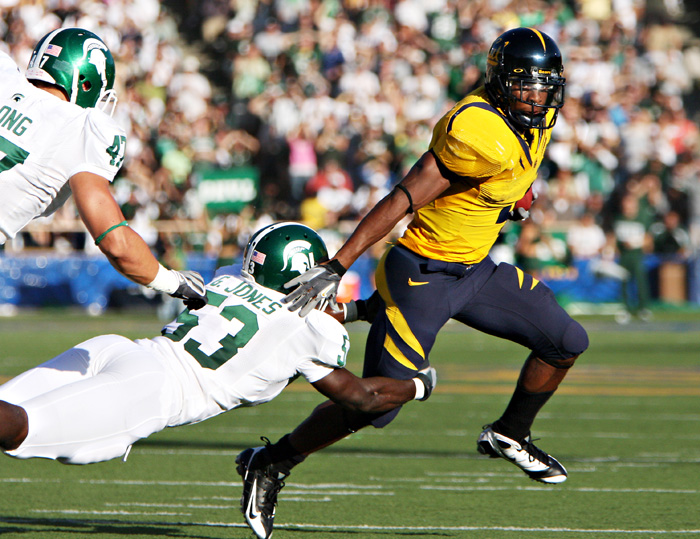Last time I left off, I had finished shooting my first football game and was left partially satisfied with most of my setup, yet wanting a bit more, especially on the very long end. For my second game the very next week, I traveled out with the team to Palouse, Washington, for an away game against the Washington State Cougars.

Clear skies in Palouse, WA at Washington State
Since the wide and mid-range setup worked just fine, I decided to stick with that, but on the long end I brought a Nikon D200 and Nikon 400mm f/2.8 non-VR lens (Nikon, yucky!).
Long range: Nikon D200 with 400 f/2.8 (35mm equivalent: 600mm f/4.2)
Midrange: Canon 1D Mark II with 70-200 f/2.8 IS (35mm equivalent: 91-260mm f/3.6)
Wide: Canon 5D with 24-70 f/2.8 (35mm equivalent: 24-70mm f/2.8)
Ultrawide: Canon 5D with 12-24 f/4.5-5.6 (35mm equivalent: 12-24 f/4.5-5.6
Handling the 600mm Beast
Compared to the Canon 40D with 1.4x teleconverter and 70-200 f/2.8 IS I had last time, the D200 equipped with a big prime like the 400 f/2.8 was a very different kind of beast. To start off, the setup was far more clunky – while a 70-200 and 40D can easily sling over your shoulder or around your neck, and can be handheld without a problem, the 400mm is heavy and on top of that really needs to be used with a monopod. This is problematic in a few ways:




